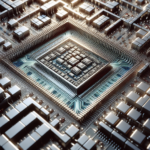How CPUs Contribute to Advanced Image Recognition
How CPUs Contribute to Advanced Image Recognition
In the realm of artificial intelligence (AI) and machine learning (ML), image recognition stands out as one of the most transformative technologies. From facial recognition systems to autonomous vehicles, the ability to accurately identify and process images is crucial. Central to this capability is the Central Processing Unit (CPU), the brain of any computing system. This article delves into how CPUs contribute to advanced image recognition, exploring their role, capabilities, and future potential.
The Role of CPUs in Image Recognition
Understanding Image Recognition
Image recognition is a subset of computer vision that involves identifying and detecting objects or features in a digital image or video. It leverages deep learning algorithms, particularly convolutional neural networks (CNNs), to process and interpret visual data. The process involves several stages, including image preprocessing, feature extraction, and classification.
CPU vs. GPU: A Comparative Analysis
While Graphics Processing Units (GPUs) are often highlighted for their prowess in handling parallel processing tasks, CPUs play an equally critical role in image recognition. Here’s a comparative analysis:
- Flexibility: CPUs are general-purpose processors capable of handling a wide range of tasks, making them versatile for various stages of image recognition.
- Sequential Processing: CPUs excel in tasks that require sequential processing and complex decision-making, which are essential in the initial stages of image recognition.
- Integration: CPUs are integral to the overall system architecture, coordinating between different hardware components, including GPUs, for efficient image recognition.
Key Contributions of CPUs
CPUs contribute to advanced image recognition in several ways:
- Data Preprocessing: Before an image is fed into a neural network, it undergoes preprocessing, such as resizing, normalization, and augmentation. CPUs handle these tasks efficiently, ensuring the data is in the optimal format for further processing.
- Algorithm Implementation: CPUs are responsible for implementing and optimizing the algorithms used in image recognition. This includes the execution of complex mathematical operations and logical decisions.
- Coordination and Control: CPUs manage the overall workflow, coordinating between different hardware components and ensuring seamless data flow. This is crucial for maintaining the efficiency and accuracy of image recognition systems.
Technological Advancements Enhancing CPU Capabilities
Multi-Core Processing
Modern CPUs are equipped with multiple cores, allowing them to handle parallel processing tasks more efficiently. This is particularly beneficial for image recognition, where multiple operations can be performed simultaneously, speeding up the overall process.
Advanced Instruction Sets
CPUs now come with advanced instruction sets, such as AVX (Advanced Vector Extensions) and SSE (Streaming SIMD Extensions), which enhance their ability to perform complex mathematical operations required in image recognition.
Integration with AI Accelerators
Many modern CPUs are integrated with AI accelerators, specialized hardware designed to accelerate AI and ML tasks. This integration enhances the CPU’s ability to handle image recognition tasks more efficiently.
Case Studies: CPUs in Action
Facial Recognition Systems
Facial recognition systems rely heavily on CPUs for preprocessing and feature extraction. For instance, in security systems, CPUs handle the initial stages of image capture, preprocessing, and feature extraction before passing the data to GPUs for further processing and recognition.
Autonomous Vehicles
In autonomous vehicles, CPUs play a crucial role in processing visual data from cameras and sensors. They handle tasks such as object detection, lane detection, and obstacle avoidance, ensuring the vehicle can navigate safely and efficiently.
Medical Imaging
In the field of medical imaging, CPUs are used to process and analyze images from MRI, CT scans, and X-rays. They handle tasks such as image enhancement, segmentation, and classification, aiding in accurate diagnosis and treatment planning.
Challenges and Future Directions
Power Consumption
One of the significant challenges with CPUs is power consumption. As image recognition tasks become more complex, the demand for processing power increases, leading to higher energy consumption. Future advancements in CPU design aim to address this issue by improving energy efficiency.
Scalability
Scalability is another challenge, particularly in large-scale image recognition systems. Ensuring that CPUs can handle increasing amounts of data and more complex algorithms is crucial for the future of image recognition technology.
Integration with Emerging Technologies
The future of CPUs in image recognition lies in their integration with emerging technologies such as quantum computing and neuromorphic computing. These technologies promise to revolutionize the field by offering unprecedented processing power and efficiency.
FAQ
What is the primary role of CPUs in image recognition?
CPUs play a crucial role in data preprocessing, algorithm implementation, and coordination of the overall workflow in image recognition systems. They handle tasks such as resizing, normalization, and augmentation of images, as well as executing complex mathematical operations and logical decisions.
How do CPUs compare to GPUs in image recognition?
While GPUs are known for their parallel processing capabilities, CPUs are essential for tasks that require sequential processing and complex decision-making. CPUs are also responsible for coordinating between different hardware components, including GPUs, ensuring efficient data flow and system performance.
What technological advancements have enhanced CPU capabilities in image recognition?
Advancements such as multi-core processing, advanced instruction sets (e.g., AVX and SSE), and integration with AI accelerators have significantly enhanced CPU capabilities in image recognition. These advancements allow CPUs to handle complex mathematical operations and parallel processing tasks more efficiently.
What are some real-world applications of CPUs in image recognition?
CPUs are used in various real-world applications, including facial recognition systems, autonomous vehicles, and medical imaging. In these applications, CPUs handle tasks such as image preprocessing, feature extraction, object detection, and image analysis, contributing to accurate and efficient image recognition.
What challenges do CPUs face in image recognition?
CPUs face challenges such as power consumption and scalability. As image recognition tasks become more complex, the demand for processing power increases, leading to higher energy consumption. Ensuring that CPUs can handle increasing amounts of data and more complex algorithms is also a challenge for the future of image recognition technology.
Conclusion
CPUs play an indispensable role in advanced image recognition, contributing to various stages of the process, from data preprocessing to algorithm implementation and system coordination. While GPUs often take the spotlight for their parallel processing capabilities, the versatility and flexibility of CPUs make them equally important. Technological advancements continue to enhance CPU capabilities, paving the way for more efficient and accurate image recognition systems. As we look to the future, the integration of CPUs with emerging technologies promises to further revolutionize the field, addressing current challenges and unlocking new possibilities.




